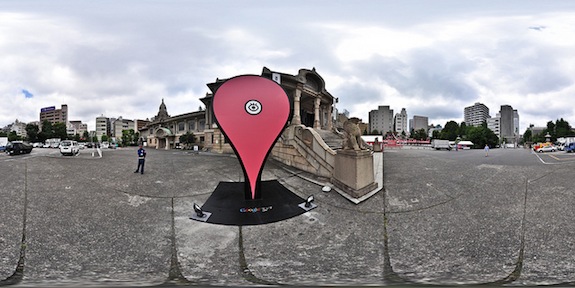This Is What Being a Google Maps Editor Is Like
Google maps is back on the iPhone, and thank goodness because the whole world could basically not function without it. But how does Google Maps get made?

Image: Masato OHTA
Google Maps is back on the iPhone, and thank goodness because the whole world could basically not function without it. But how does Google Maps get made? The Huffington Post interviewed Nick Volmar, one of the map’s editors, to find out:
Volmar is a program director on Google’s Ground Truth team, which has been an essential part of Google’s efforts to create a comprehensive, detailed and accurate map of the world. To build Google Maps, Google relies not only on satellite imagery, data from third-party sources and information captured by its Street View fleet, but also on the thousands of corrections it receives daily from its users, which are manually consulted and addressed by Googlers like Volmar, who reviews up to hundreds of reports a day and updates Maps by hand.
So what does that mean day-to-day? Volmar says that they deal something like 10,000 user reports each day, with tens to hundreds of corrections coming out of them. He told the Huffington Post:
My job involves a lot of manual data updates and entries. We haven’t yet developed an intelligent way of automatically defining what is actually being requested in user reports, what the user’s need is and how to address it. For other maintenance projects — say, updating speed limits throughout a state or town — we can use information that is going to be automatically detected through Street View technology and algorithms.
Last year, The Atlantic went behind the scenes to find out how Google Maps get made and talked to Volmar too:
Humans are coding every bit of the logic of the road onto a representation of the world so that computers can simply duplicate (infinitely, instantly) the judgments that a person already made.
This reality is incarnated in Nick Volmar, the operator who has been showing off Atlas while Weiss-Malik and Gupta explain it. He probably uses twenty-five keyboard shortcuts switching between types of data on the map and he shows the kind of twitchy speed that I associate with long-time designers working with Adobe products or professional Starcraft players. Volmar has clearly spent thousands of hours working with this data. Weiss-Malik told me that it takes hundreds of operators to map a country. (Rumor has it many of these people work in the Bangalore office, out of which Gupta was promoted.)
This real time response to user additions and changes isn’t the only thing that makes Google Maps the formidable force they are today, but it’s a big reason.
More from Smithsonian.com:
You Can Come Out of Your House Now: Google Maps Is Back on the iPhone
Amazing Shots Captured by Google Street View
/https://tf-cmsv2-smithsonianmag-media.s3.amazonaws.com/accounts/headshot/Rose-Eveleth-240.jpg)
/https://tf-cmsv2-smithsonianmag-media.s3.amazonaws.com/accounts/headshot/Rose-Eveleth-240.jpg)